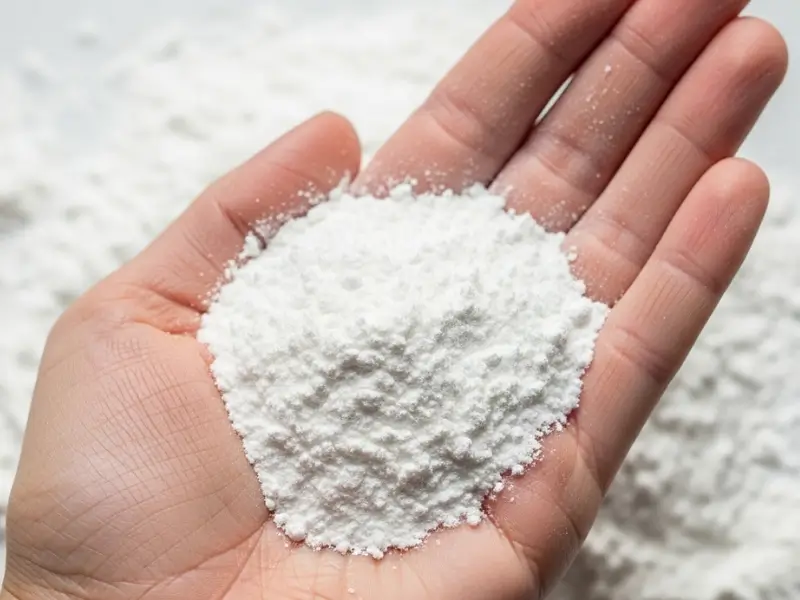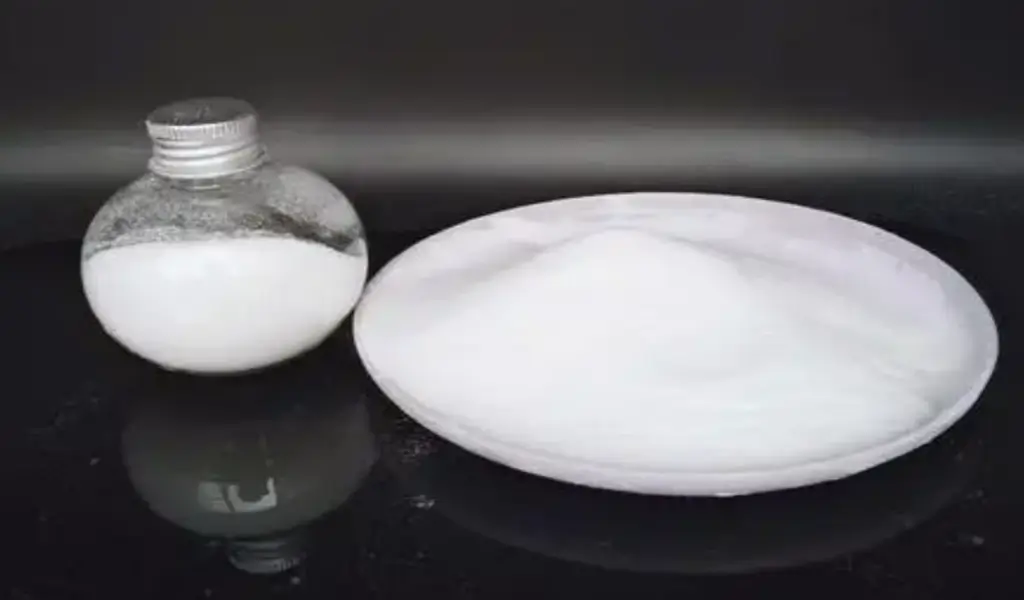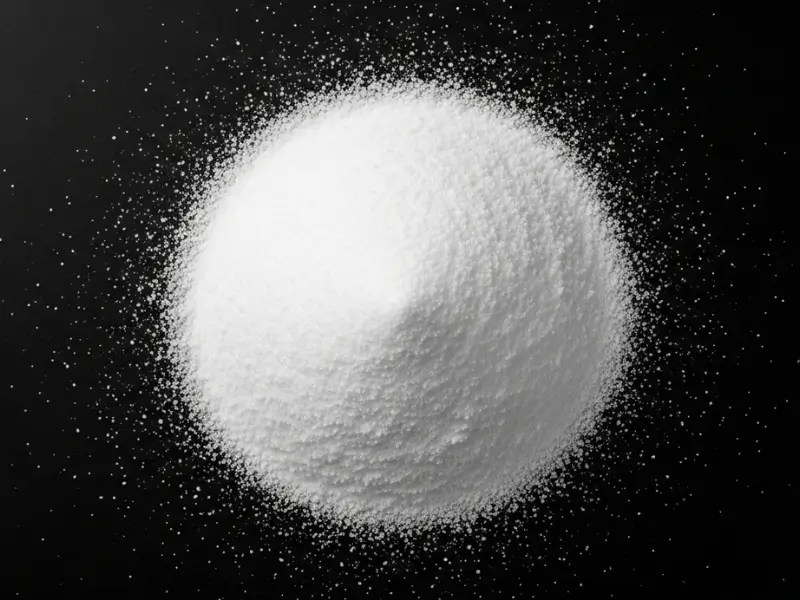CSM formulas offer superior chemical resistance, weatherability, and temperature stability compared to Neoprene, making them more reliable for demanding industrial and outdoor applications.
1. Introduction to CSM and Neoprene
When it comes to industrial materials, understanding the nuances of each option is essential. CSM and Neoprene are both synthetic rubbers widely used across various sectors, yet they have distinct characteristics and applications.as detailed in our comparison article’‘CSM vs Neoprene: Which Rubber Suits You Best?.” What’s the real story? CSM is known for its superior weather resistance, chemical stability, and overall durability making it a solid choice for many industrial applications. In contrast, Neoprene, while versatile, has limitations in extreme conditions, particularly regarding heat and chemical exposure.
CSM’s production involves a chlorination process that enhances its resistance to heat and weather-related wear. This quality positions CSM as a strong contender in settings where standard materials struggle to maintain integrity under stress. On the flip side, Neoprene’s basic advantages lie in its flexibility and comfort, making it popular for applications in consumer goods and sports equipment.
Understanding the context and uses of these materials is critical for professionals seeking to make informed decisions when selecting materials for their specific needs. This knowledge not only aids in understanding the capabilities of each but also enables a comprehensive assessment of project requirements and expected outcomes.
| Material | Properties | Key Applications |
|---|---|---|
| CSM | Weather resistant, chemically stable | Industrial and automotive |
| Neoprene | Flexible, comfortable | Sports equipment, consumer goods |
2. Understanding CSM Compound Formulas
To appreciate why CSM formulas outperform Neoprene in real-world use, it is essential to understand what gives CSM its advantageous properties. Ready for the good part? CSM compounds are known for their excellent weatherability, ozone resistance, and ability to maintain performance under extreme temperatures. Their unique structure allows them to resist degradation, which is particularly beneficial in applications exposed to harsh environments.
CSM is made through the chlorination of polyethylene, which increases the material’s molecular weight —a fundamental process explained in”What Is CSM Material.”and alters its chemical structure, enhancing its properties. The result is a robust material that demonstrates superior tensile strength and elongation properties compared to many other synthetic rubbers.
Different formulations of CSM may include specific additives to enhance various characteristics beyond standard performance, such as enhanced flame resistance or improved flexibility. This ability to tailor CSM formulas helps address the specific needs of multiple industries, ranging from automotive to chemical processing.
In practical terms, using CSM compounds in applications such as seals, gaskets, and hoses allows for greater longevity and reliability than traditional materials. This reliability translates to less downtime and reduced maintenance costs for businesses operating in demanding conditions where equipment failure can be catastrophic.
| CSM Property | Performance Benefit | Common Formulations Used |
|---|---|---|
| Weather Resistance | Long-lasting outdoor use | General purpose CSM |
| Chemical Stability | Resists aggressive chemicals | Specialty formulations |
| Temperature Tolerance | High-performance in hot and cold | High-temp CSM |
3. Understanding Neoprene and Its Formulas
Now that we have a solid grasp of CSM formulas, it’s crucial to delve into Neoprene, a material that has been a staple in the industry for years. Neoprene’s unique blend of properties provides a flexible and resilient solution, but it doesn’t shine in all aspects. But here’s the kicker… While Neoprene is versatile and commonly used, especially in consumer products, it has notable limitations that can impact its effectiveness in high-performance scenarios.
Neoprene is composed of polychloroprene, and its formulation allows for excellent mechanical properties, including good elasticity and resistance to tear. The material can also withstand water and oily environments, making it an excellent choice for wet applications. However, it loses its mechanical strength at higher temperatures, which can result in compromised performance over time.
Neoprene excels in applications that demand flexibility and cushioning, such as wetsuits and orthopedic braces. However, in environments that require durability against chemical corrosion or extreme temperatures, CSM is the clear frontrunner. By understanding Neoprene’s strengths and weaknesses, businesses can better align their material choices with project requirements.
This differentiation is essential for companies looking to enhance product performance and reliability. While Neoprene is effective in many scenarios, it’s crucial to analyze whether its properties align with project objectives, especially when alternatives like CSM may offer better solutions.
| Neoprene Property | Expected Performance | Common Applications |
|---|---|---|
| Flexibility | High comfort and adaptability | Wetsuits, braces |
| Chemical Resistance | Moderate, can be affected by solvents | Industrial gaskets |
| Temperature Sensitivity | Loses strength in extreme heat | Not ideal for extreme conditions |
4. Performance Comparison: CSM vs Neoprene
A direct comparison of CSM and Neoprene reveals important insights into their respective performances, especially in real-world applications. What’s the scoop? Both materials are used for various purposes, yet they offer different advantages in terms of mechanical and environmental resistance.
When examining mechanical properties, CSM consistently outperforms Neoprene in crucial areas like tensile strength, elongation at break, and resilience. For example, in high-stress situations, CSM maintains its integrity far better than Neoprene, which can tear or deform under similar conditions. This translates to significant longevity, lowering the overall cost for businesses that rely on these materials for critical applications.
Chemical resistance is another vital point of difference. CSM compounds stand up remarkably well against harsh chemicals, oils, and solvents—a core strength explored in”CSM Chemical Resistance: The Clear Advantage Over Other Elastomers.”, making them ideal for use in environments such as automotive and chemical processing. Neoprene, while resistant to some common substances, can degrade under exposure to more aggressive chemicals, potentially leading to early failures.
Temperature resistance is also a significant factor. CSM can perform effectively in extreme temperature ranges, both hot and cold, without losing elasticity or mechanical strength. Conversely, Neoprene’s performance drops off as temperatures rise, making it less suitable for high-heat applications.
These performance factors are essential for industries needing reliable materials that can withstand demanding conditions. By focusing on the strengths of each material, companies can make strategic choices that align with project goals and operational efficiency.
| Performance Metric | CSM | Neoprene |
|---|---|---|
| Tensile Strength | Higher stability under stress | Moderate |
| Chemical Resistance | Superior in harsh environments | Moderate, with limitations |
| Temperature Resistance | Effective from -40°F to 200°F | Loses performance above 180°F |
5. Real-World Applications of CSM
With a clear understanding of CSM’s advantages, let’s explore the exciting applications where this material truly shines. This is where it gets interesting… CSM excels in several industries due to its unique properties, making it a go-to material for many demanding applications.
In the automotive industry, for instance, CSM is often used in fuel lines, seals, and gaskets that require both chemical resistance and temperature tolerance. These components are critical in ensuring vehicles operate efficiently and without leaks or failures, thereby enhancing overall performance and safety.
Another prominent application is in construction. CSM is utilized for roofing membranes due to its resistance to UV radiation and weathering. It ensures longevity in outdoor applications where traditional materials might degrade over time. Additionally, CSM offers excellent insulation properties, making it beneficial in HVAC systems.
Moreover, CSM is recognized for its use in electrical insulation products. The ability to withstand harsh chemical environments without compromising performance makes it ideal for various cabling and connector applications. CSM’s flexibility allows for easier installation and durability, ensuring reliable long-term performance.
These applications highlight how CSM can address specific industry challenges, providing solutions that not only meet but exceed expectations. The material’s adaptable nature and robust performance translate to higher value and reliability in critical sectors.
| CSM Application | Industry | Key Characteristics |
|---|---|---|
| Fuel Lines | Automotive | Chemical and temperature resistant |
| Roofing Membranes | Construction | UV and weather resistant |
| Electrical Insulation | Electrical | Flexibility and durability |
6. Real-World Applications of Neoprene
Turning our attention to Neoprene, it’s essential to recognize where this material fits in the landscape of real-world applications. Let’s break it down. Neoprene has carved out its niche mainly in areas where flexibility, comfort, and cushioning are paramount.
In the sporting goods sector, Neoprene is widely used in wetsuits, knee pads, and other protective gear. The material’s ability to stretch while providing thermal insulation is a key advantage for water sports enthusiasts. It keeps athletes comfortable in cold water conditions while allowing full range of motion.
Moreover, Neoprene is often the material of choice for orthopedic braces and supports. Its cushioning effect helps in stabilizing joints while providing enough flexibility to maintain movement. In these applications, the comfort factor is vital, making Neoprene a popular option among consumers looking for reliable support equipment.
Neoprene also sees use in the manufacturing of gaskets and seals for various industries, albeit with limitations in chemical exposure when compared to CSM. The commonality of Neoprene in personal and consumer products highlights its value in markets focused on comfort and flexibility, albeit with tailored applications.
This understanding allows businesses to identify the most suitable applications for both CSM and Neoprene, showcasing the necessity for insightful material selection across diverse industries. Recognizing the specific advantages of each material helps in placing them effectively where they can deliver optimal performance.
| Neoprene Application | Industry | Key Characteristics |
|---|---|---|
| Wetsuits | Sporting Goods | Flexibility and insulation |
| Orthopedic Braces | Healthcare | Comfort and structure |
| Gaskets and Seals | Various Industries | Moderate chemical resistance |
7. Cost Analysis: CSM vs Neoprene
A significant factor in any material selection process is the cost involved. What’s the bottom line? While the initial pricing of materials is critical, understanding long-term value and total cost of ownership is equally important, especially in industrial and commercial applications.
CSM generally carries a higher upfront cost compared to Neoprene. However, this is often offset by its longevity and durability. When CSM is used in high-performance applications, its longer lifespan leads to decreased replacement and maintenance costs over time. Businesses may find that investing in CSM translates into lower operational expenses due to fewer failures and more stable performance.
In contrast, while Neoprene’s initial cost might be lower, its shorter lifespan and susceptibility to environmental factors can lead to increased costs over time. For example, in applications requiring frequent replacements, the cumulative costs can surpass those associated with CSM, creating a false sense of savings initially.
Additionally, industries that can justify higher upfront material costs in exchange for reliability and performance are likely to favor CSM. Regulations and industry standards may also compel companies to use higher-quality materials to avoid compliance issues, further supporting the case for CSM.
Understanding the dynamics of material costs and projecting lifecycle value ensures that businesses make informed choices that will ultimately support their financial goals.
| Cost Factors | CSM | Neoprene |
|---|---|---|
| Initial Material Cost | Generally higher | Generally lower |
| Lifespan | Long-term savings due to durability | Shorter lifespan may lead to higher replacement costs |
| Total Cost of Ownership | More economical in the long run | Less economical over time |
8. Environmental Impact of CSM and Neoprene
In today’s world, it’s imperative to consider the environmental impact of the materials we use. What does it mean for sustainability? Both CSM and Neoprene have specific ecological footprints that impact their selection in various applications.
CSM is often touted for its sustainability attributes. The material can sustain harsh weather and environmental conditions which often leads to reduced waste due to less frequent replacements. Additionally, CSM can be engineered to be more recyclable than other synthetic rubbers, making it a more eco-friendly choice in certain scenarios.
Conversely, Neoprene has been criticized for its environmental impact, primarily due to its production processes and limited recycling options. Although it offers some cushioning benefits that lead to waste reduction in certain consumer applications, the challenges linked to its lifecycle do pose significant sustainability concerns.
As such, companies are increasingly scrutinizing their choice of materials and seeking alternatives that not only meet performance requirements but also align with sustainability goals. The trend towards environmentally responsible material selection signifies a growing acknowledgement that companies must account for their broader ecological impact.
Ultimately, this environmental awareness helps guide industries towards making selections that promote sustainability without compromising performance.
| Environmental Factor | CSM | Neoprene |
|---|---|---|
| Recyclability | More options available | Limited recycling avenues |
| Lifecycle Durability | Reduces waste through longevity | Shorter lifecycle increases waste |
| Resource Consumption | Often utilizes fewer resources | Higher resource consumption |
9. Manufacturing Processes and Techniques
The manufacturing processes involved in creating CSM and Neoprene are key to understanding their end properties. How do these methods affect material quality? The distinct production methods impart unique characteristics to each material type, ultimately influencing their performance in applications.
CSM’s manufacturing process begins with the chlorination of polyethylene. This chemical modification enhances its properties, yielding a material that can offer higher stability and more robust performance in demanding conditions. The ability to customize CSM through additives further allows manufacturers to meet specified performance characteristics, leading to the creation of tailored solutions for various applications.
In contrast, Neoprene is manufactured through a polymerization process that results in a more flexible and elastic product. While this flexibility is beneficial in many applications, it can also result in a material that is less durable in extreme conditions.
The differences in manufacturing processes reveal why CSM tends to outperform Neoprene in high-performance environments. Understanding these processes helps in assessing which material best suits specific needs, particularly in industries where performance dictates choices.
| Material | Manufacturing Process | Key Outcomes |
|---|---|---|
| CSM | Chlorination of polyethylene | Enhanced stability and customization |
| Neoprene | Polymerization | Flexibility and elasticity |
10. Innovation in CSM Compounds
Innovation drives many materials industries, and CSM is no exception. Let’s explore what’s new in CSM technology. Recent advancements in CSM formulations are pushing the boundaries of performance and application, leading to significant breakthroughs that further increase its appeal.
One exciting development is the integration of bio-based additives into CSM formulations, which adds environmental benefits while maintaining high-performance characteristics. These advancements allow manufacturers to produce CSM that has a smaller ecological footprint while still meeting industrial performance standards.
Another trend in CSM innovation involves enhancing compatibility with other materials. For example, advances in hybrid formulations are allowing CSM to be combined with other compounds to improve its overall performance in specific applications. These hybrids have shown to resist wear and tear better while maintaining the desired flexibility and utility.
Additionally, researchers are exploring enhanced flame-retardant properties in CSM compounds. This is particularly crucial for applications in automotive and aerospace industries where safety is paramount. By establishing higher standards in fire performance, CSM is positioning itself as a leader in safety-critical environments.
Monitoring these innovations enables stakeholders in various industries to remain ahead of the curve and adopt materials that leverage the latest advancements for their applications.
| Area of Innovation | Development | Impact on Performance |
|---|---|---|
| Bio-Based Additives | Reduced ecological footprint | Sustained performance |
| Hybrid Formulations | Enhanced compatibility | Improved durability |
| Flame Retardancy | Increased safety | High-performance in critical sectors |
11. Challenges in Using CSM and Neoprene
Despite their advantages, both CSM and Neoprene present challenges that users must navigate. What hurdles do professionals encounter? Understanding these issues is vital for effectively deploying these materials in real-world applications.
With CSM, one potential challenge lies in its higher cost relative to alternatives. Businesses must justify the expense through demonstrated performance benefits, which can require thorough analysis and planning. Additionally, CSM can be complicated to process in some manufacturing scenarios, demanding experienced staff and specialized equipment to ensure quality.
For Neoprene, the challenges often center around its limitations regarding heat and chemical resistance. As acknowledged earlier, Neoprene is not suitable for high-heat applications and can degrade when subject to aggressive chemicals. This susceptibility can lead to frequent breakdowns and replacements, ultimately increasing long-term costs for companies using Neoprene in these contexts.
Navigating these challenges calls for careful consideration and application of best practices. This may include selecting the correct material formulation based on the specific circumstances of each project, leveraging innovations that address limitations, and conducting rigorous testing to ensure that the chosen material will meet performance expectations.
| Material | Common Challenges | Strategies for Mitigation |
|---|---|---|
| CSM | Higher cost and processing complexity | Justify through performance analysis |
| Neoprene | Limited heat and chemical resistance | Assess application and environment |
12. Testing and Quality Control
Testing and quality assurance are critical components of material selection and deployment. How do these processes ensure reliability? Rigorous testing methods are fundamental for validating the performance characteristics of both CSM and Neoprene, allowing professionals to make informed decisions.
For CSM, standardized tests assess properties such as tensile strength, elongation, and chemical resistance. Manufacturers must comply with industry standards to ensure that their CSM materials perform reliably in real-world scenarios. These tests not only verify the material characteristics but also aid in identifying the appropriate applications for each CSM formulation.
Neoprene also undergoes stringent testing protocols but may not always meet performance criteria for high-demand environments. Tests for Neoprene typically focus on flexibility, water resistance, and comfort properties. While this evaluation is essential, the limitation in industrial performance can become evident during practical application.
Ensuring high-quality through comprehensive testing offers peace of mind for businesses relying on these materials. Not only does this safeguard against liability issues, but it also supports operational efficiencies by selecting the best material for the task at hand.
| Material | Testing Methods | Focus of Evaluation |
|---|---|---|
| CSM | Tensile strength, chemical resistance | Performance in harsh conditions |
| Neoprene | Flexibility, water resistance | Comfort and suitability for consumer products |
13. Expert Insights and Recommendations
Gathering insights from industry experts can be instrumental in making informed material choices. What do the experts say? Many professionals recommend taking a holistic approach when selecting between CSM and Neoprene, weighing the specific application requirements and performance demands.
Experts typically advise conducting thorough assessments of the operating environment, detailing the chemical exposures and temperature ranges anticipated during use. Such analyses help ensure that the selected material aligns with real-world conditions, ultimately enhancing reliability and performance.
In addition to performance evaluations, consultation with material manufacturers can provide valuable insights into the latest innovations and tailored applications. Manufacturers often have extensive experience in utilizing specific formulations for various needs and can guide users towards selecting the optimum material.
Finally, adopting an iterative approach to testing and evaluation is crucial. Collecting data during practical use can help refine material selection processes and lead to improved performance in subsequent applications.
Through expert recommendations, companies can make better choices that not only enhance their products but also ensure compliance, sustainability, and market competitiveness.
| Expert Focus | Key Recommendations | Outcomes |
|---|---|---|
| Material Selection | Align use with performance criteria | Enhanced reliability and performance |
| Manufacturer Consultation | Discuss innovations and applications | Tailored solutions |
| Iterative Testing | Embrace data collection and analysis | Continuous improvement |
14. Case Studies: Success Stories Using CSM
To illustrate the practical advantages of CSM, let’s examine some compelling case studies showcasing its successful application. Let’s highlight a few success stories.
One notable case is in the automotive sector, where an automobile manufacturer transitioned from traditional rubber-based materials to CSM for their fuel lines. The result? Significant reductions in leaks and failures, ultimately enhancing vehicle performance and safety. By incorporating CSM, the manufacturer not only improved reliability but also reduced costs associated with warranty claims.
Another example can be found within the construction industry. An urban development project opted for CSM roofing membranes due to their exceptional weather resistance and longevity. The outcome? A roof that withstood severe weather conditions without requiring replacements or extensive maintenance, ultimately increasing property value and tenant satisfaction.
Finally, a chemical processing plant adopted CSM gaskets and seals to counter aggressive chemical exposure. This shift resulted in drastically extended component lifespans and improved operational safety, reducing downtime related to equipment failure.
These case studies highlight the tangible benefits of choosing CSM in place of alternative materials like Neoprene. The success stories reinforce the idea that investing in better materials leads to improved performance, reliability, and overall operational efficiency.
| Case Study | Industry | Key Outcomes |
|---|---|---|
| Fuel Lines | Automotive | Reduced leaks and enhanced safety |
| Roofing Membranes | Construction | Longer lifespan and low maintenance |
| Gaskets and Seals | Chemical Processing | Improved safety and reduced downtime |
15. Conclusion: The Future of CSM and Neoprene
In conclusion, CSM formulas clearly demonstrate an advantage over Neoprene in a multitude of challenging applications. As discussed, CSM’s superior mechanical properties, temperature resistance, and chemical stability make it the material of choice in industries ranging from automotive to construction. What’s the final takeaway?
While Neoprene holds its own in certain applications where flexibility and cushioning are priorities, its limitations become apparent in demanding environments. Cost considerations, environmental impact, and innovative advancements further bolster the case for utilizing CSM in applications that require higher performance and longevity.
As industries continue to seek sustainable materials that meet their operational demands, CSM is poised to play an increasingly critical role in the future landscape of industrial solutions. By embracing the advantages of CSM and applying expert recommendations, companies can enhance their product offerings, improve reliability, and optimize performance.
| Summary Points | Key Takeaways |
|---|---|
| CSM Advantages | Superior performance and durability |
| Neoprene Limitations | Flexibility with environmental concerns |
| Future Trends | Increased focus on sustainability |
FAQ Section
Q1: What is CSM?
CSM, or Chlorosulfonated Polyethylene, is a synthetic rubber known for its weather resistance, chemical stability, and durability in demanding conditions.
Q2: How does CSM outperform Neoprene?
CSM exhibits superior chemical resistance, thermal stability, and mechanical properties compared to Neoprene, making it suitable for various demanding applications.
Q3: What are common applications for Neoprene?
Neoprene is widely used in sporting goods, such as wetsuits and orthopedic braces, due to its flexibility and comfort.
Q4: What are the environmental impacts related to CSM and Neoprene?
CSM generally has a lower ecological footprint due to its longevity and recyclability, whereas Neoprene faces criticism for its production and disposal challenges.
Q5: How can companies choose between CSM and Neoprene?
Companies should assess project requirements, considering factors like performance expectations, environmental conditions, and lifecycle costs to determine the best material for their applications.





